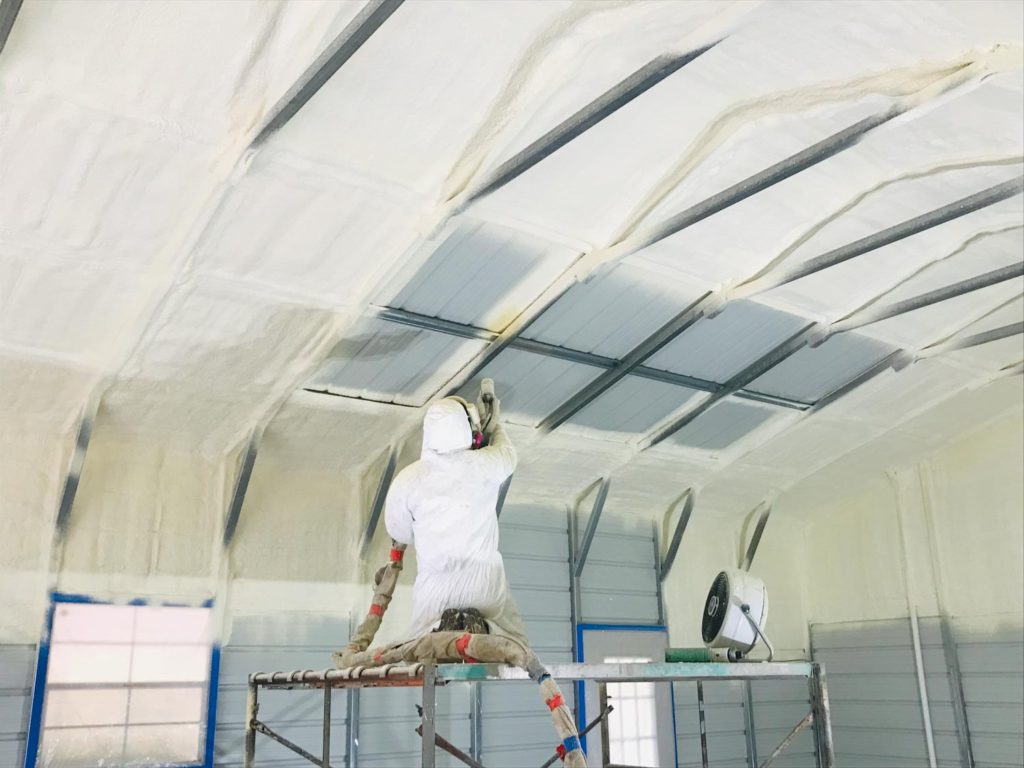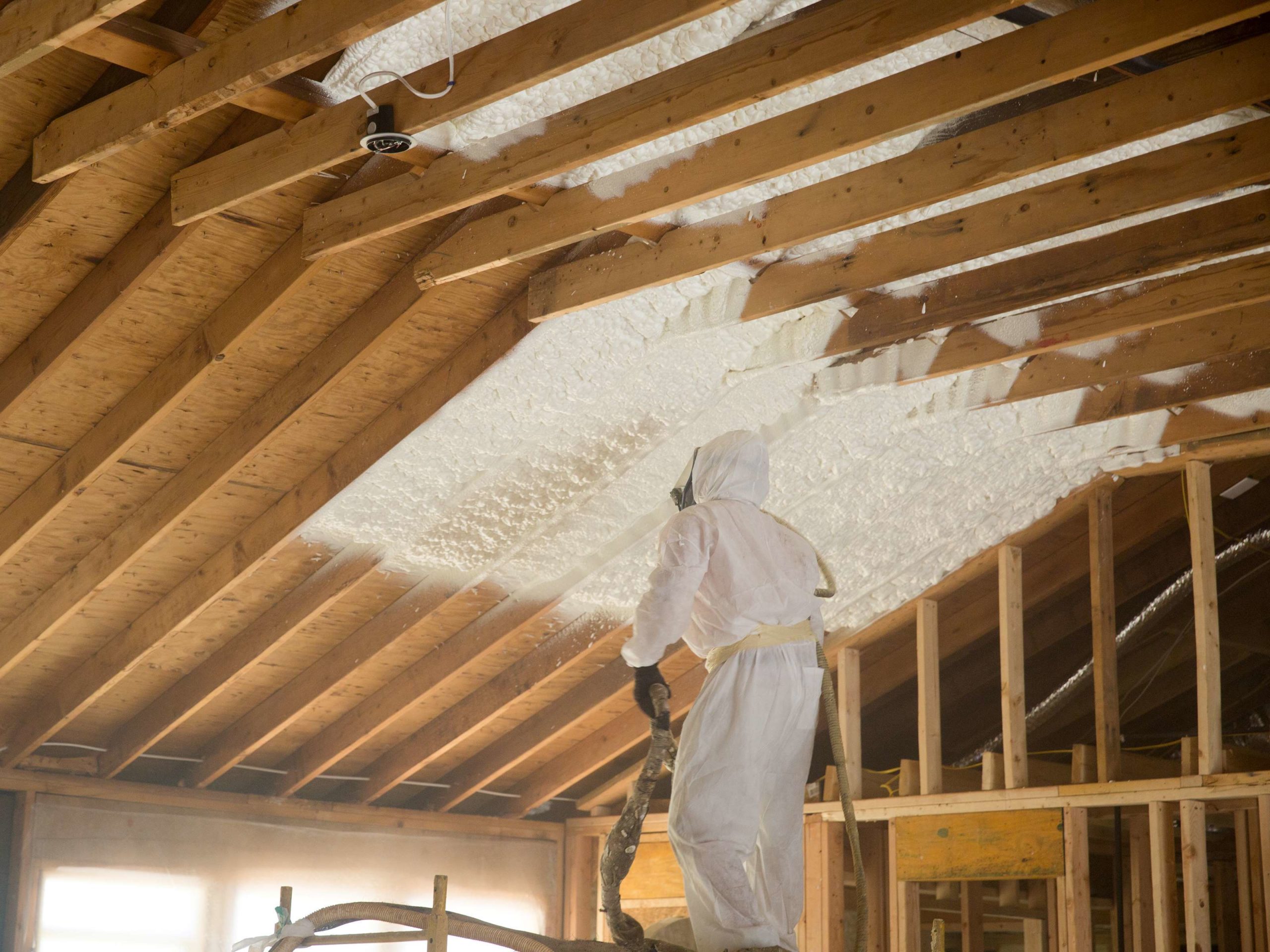Leading Applications of Spray Foam for Residential and Commercial Properties
Leading Applications of Spray Foam for Residential and Commercial Properties
Blog Article
Spray Foam: The Ultimate Option for Air Sealing and Insulation
Spray foam insulation has actually emerged as a leading option for reliable air sealing and thermal insulation, providing an one-of-a-kind mix of homes that establish it in addition to traditional techniques. Its capability to increase and load gaps makes it particularly efficient in stopping air leak, which can dramatically impact energy efficiency. Comprehending the full range of its benefits, setup processes, and contrasts with various other insulation kinds is crucial for making informed decisions. As we discover these facets, the effects for both brand-new building and constructions and retrofits come to be significantly considerable. What aspects should influence your option?
What Is Spray Foam?
Spray foam is a functional insulation material that combines the concepts of air sealing and thermal resistance to enhance power effectiveness in buildings. Made up mostly of polyurethane or other comparable compounds, spray foam is used as a fluid that expands upon call with surfaces, developing a strong, continuous layer of insulation. This one-of-a-kind property enables it to fill voids, fractures, and voids that standard insulation materials might ignore, providing a premium air seal.
There are two major types of spray foam: open-cell and closed-cell. Open-cell spray foam is lighter and more versatile, offering exceptional sound absorption and a reduced R-value per inch - Spray Foam. In contrast, closed-cell spray foam is denser, giving a higher R-value, dampness resistance, and added architectural stability to constructing elements
The application procedure usually involves specific equipment, making certain a seamless application that follows different substratums, including concrete, wood, and steel. This versatility makes spray foam ideal for both new buildings and retrofitting existing frameworks. Its capacity to create a closed obstacle significantly adds to minimizing power consumption and enhancing interior air top quality, therefore making it a preferred choice among house owners and building contractors alike.
Advantages of Spray Foam Insulation
One of one of the most significant advantages of spray foam insulation is its phenomenal ability to develop a constant air obstacle, which successfully reduces power loss. Unlike typical insulation products, spray foam expands to fill cracks and voids, guaranteeing that air leakage is substantially reduced. This characteristic not only improves power performance but likewise causes decrease energy bills gradually.
Additionally, spray foam insulation offers exceptional thermal resistance, adding to an extra secure interior setting. Its high R-value per inch allows for efficient insulation in restricted spaces, making it ideal for attic rooms, wall surfaces, and crawl areas. The moisture-resistant homes of spray foam help protect against mold and mildew and mildew development, advertising healthier living conditions.
An additional important benefit of spray foam insulation is its sound-dampening top qualities (Spray Foam). It successfully decreases sound transmission between areas, producing a quieter and more comfy home environment. The durability of spray foam likewise stands out, as it does not droop or settle with time, maintaining its efficiency throughout its lifespan
Just How Spray Foam Works
Comprehending how spray foam insulation functions is essential for valuing its efficiency in air securing and thermal resistance. Spray foam insulation includes 2 primary elements: isocyanate and polyol resin. When these elements are combined, they undergo a chemical response that creates the material to broaden swiftly, creating a thick foam that loads splits, voids, and dental caries.
As the foam expands, it follows surfaces, developing an impermeable seal that considerably minimizes air seepage. This particular makes spray foam insulation very effective at avoiding drafts and wetness infiltration, which can bring about power loss and damages over time. In addition, the closed-cell version of spray foam offers exceptional thermal resistance because of its stiff structure, successfully decreasing warmth transfer.
The one-of-a-kind residential properties of spray foam permit it to adjust to uneven surface areas, making certain thorough insurance coverage and a smooth obstacle. Therefore, spray foam insulation not only enhances energy efficiency but additionally adds to boosted interior air high quality by decreasing the accumulation of toxins and irritants. Eventually, understanding the mechanics behind spray foam emphasizes its duty as a remarkable option for insulation and air sealing in both residential and business applications.
Installation Refine Summary

Before setup, the room must be effectively cleansed and prepped, guaranteeing that surface areas are without moisture, dust, and particles. This step is important due to the fact that impurities can compromise adhesion and general performance. When the area is prepared, the application includes blending both parts of the spray foam, which increases upon call and loads voids effectively.
Educated professionals should conduct the installation, utilizing specialized equipment to ensure consistent insurance coverage and optimum thickness. Safety and security preventative measures, consisting of using protective gear and guaranteeing appropriate ventilation, are critical throughout click reference this procedure. After application, the foam commonly cures quickly, creating a strong obstacle that improves power effectiveness.
Comparing Spray Foam to Traditional Insulation
When evaluating insulation options, spray foam insulation stands out in comparison to typical products such as fiberglass and cellulose. One of the primary benefits of spray foam is its premium air securing abilities. Unlike fiberglass and cellulose, which can allow air seepage, spray foam increases upon application, loading holes and spaces to produce an airtight seal. This causes boosted energy efficiency, as less warmed or cooled down air escapes the home, leading to reduced utility costs.
Furthermore, spray foam provides a greater R-value per inch than traditional insulation kinds, providing even more effective thermal resistance in a thinner account. This characteristic is specifically helpful precede with minimal tooth cavity deepness. Moreover, spray foam is resistant to dampness and mold development, which can be a considerable concern with cellulose and fiberglass, specifically in humid atmospheres.
Nonetheless, spray foam insulation generally brings a greater ahead of time cost than its conventional equivalents. Home owners must weigh this first financial investment versus long-term energy cost savings and performance advantages. Inevitably, while both insulation kinds offer their purpose, spray foam becomes an advanced option for modern-day insulation demands, specifically in terms of air sealing and thermal efficiency.

Final Thought
In summary, spray foam insulation represents a highly effective solution for attaining optimum air securing and thermal resistance. Its special buildings, consisting of dampness resistance and audio dampening, make it appropriate for different applications in both new constructions and retrofitting tasks (Spray Foam). Although the first expenses may be higher contrasted to standard insulation materials, the long-term advantages, such as substantial energy savings and boosted interior air high quality, justify the financial investment and highlight its value in modern-day structure practices.
Spray foam insulation has actually emerged as a leading remedy for efficient air sealing and thermal insulation, supplying a distinct mix of buildings this content that set it apart from typical techniques.Spray foam is a versatile insulation product that combines the concepts of air sealing and thermal resistance to boost click here for more energy performance in buildings.When evaluating insulation choices, spray foam insulation stands out in contrast to standard materials such as fiberglass and cellulose. Eventually, while both insulation kinds serve their objective, spray foam emerges as a much more advanced option for modern insulation requirements, particularly in terms of air securing and thermal efficiency.
In summary, spray foam insulation stands for an extremely reliable service for attaining ideal air securing and thermal resistance.
Report this page